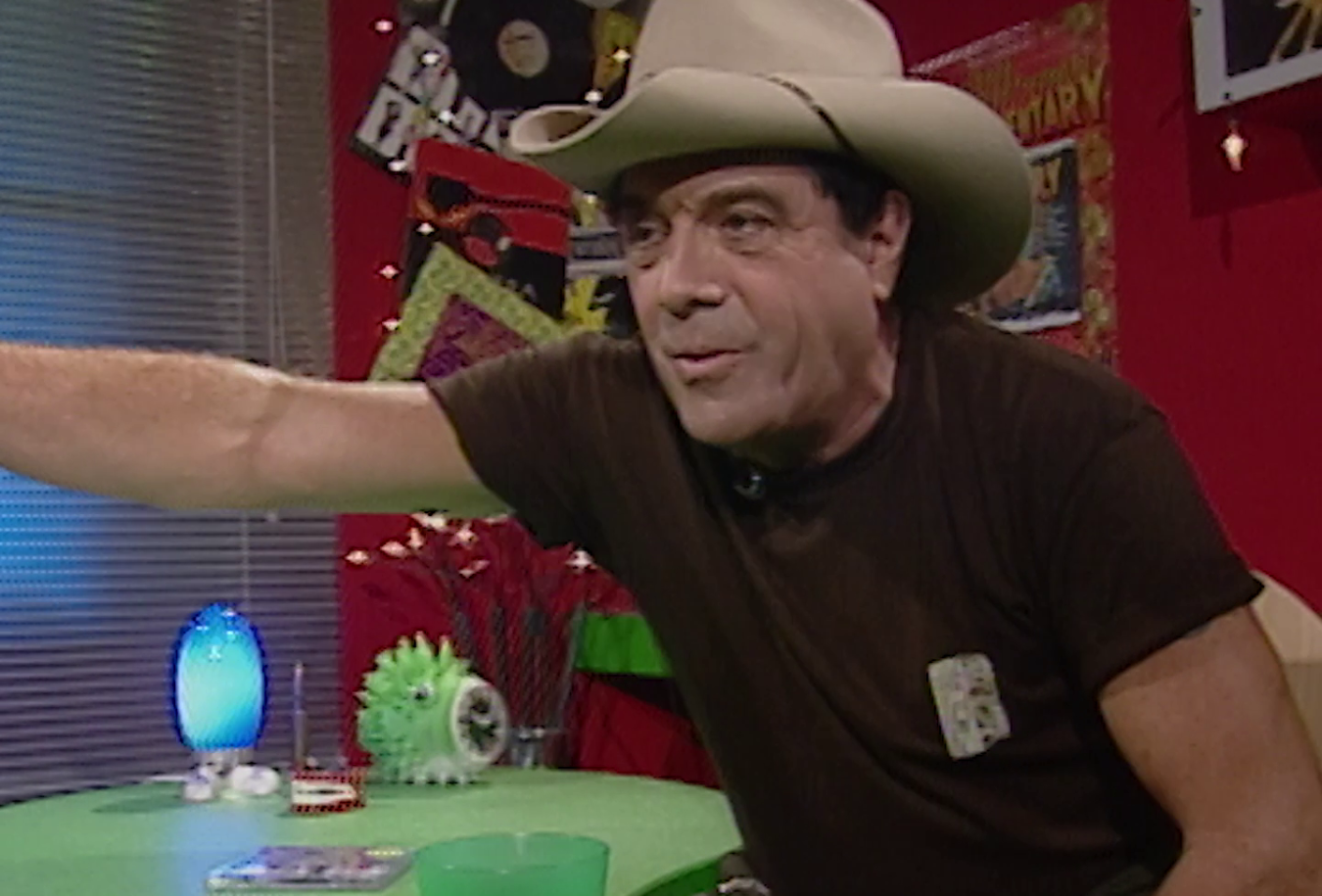
Number 96: Episode 910: ‘I’m dying to see the sights’
The building’s wine bar is about to open up for the evening rush but Norma Whittaker (Sheila Kennelly) can’t figure out why Jane Chester hasn’t turned up for her shift (she’s too busy dealing with her druggie sister Debbie). Norma asks chef Dudley (Chard Hayward) to work, even though he has had a difficult afternoon taking relatives to visit his cousin Jaja’s grave (she was travelling in a car that drove off a cliff whilst on fire). Barmaid Prim (Pamela Gibbons) refers to an ugly scene she has had with long-lost father and alcoholic Hollywood star Trevor Banks, who has come to Australia to film a movie. Then cousin Jaja (Anya Saleky) walks through the door very much alive. As everyone looks on in horror, Jaja blithely wonders why the laundrette is closed and then asks if Dudley can have the night off because she is ‘dying to see the sights’ of Sydney.
Summary by Andrew Mercado
This is the last scene in the 1975 finale. It was the show’s biggest cliffhanger and left regular viewers gobsmacked. Note that during the closing credits one of the flats is vacant, which is why a question mark is superimposed over it during the cast roll.
Number 96 promoted its 1976 premiere via newspaper advertisements featuring Jaja in a sexy halter top and hotpants. The headline screamed: ‘Jaja has returned from the dead. Where has she been? Whose mutilated body was in Jaja’s coffin? It’s all in the new, big Number 96, now a full hour of drama and excitement every Monday and Tuesday at 8.30 pm.’
It turns out that Jaja had short-term memory loss caused by the shock of seeing the car crashing (she was thrown free in the nick of time). Despite refusing to do any nudity, Anya Saleky remained with the show for several months as its resident blonde bombshell, following a great tradition that began in 1972 with Abigail, the first sex symbol on the show – and Australian television.
Episode Synopsis
In this episode Herb Evans (Ron Shand) is keeping a whopping secret from Dorrie (Pat McDonald), Gary Whittaker (Mike Ferguson) has been stitched up by Liz Feather (Margaret Laurence) and Dudley Butterfield’s (Chard Hayward) dead cousin might not be so dead after all.
Curator’s notes
For four years Number 96 was one of Australia’s most popular TV shows, but during the 1975 season its ratings began to slide. On 5 September, an infamous (and hastily written) bomb blast destroyed the delicatessen and resulted in the loss of five major characters from the show (with scriptwriters quickly regretting killing off too many fan favourites). The explosion generated numerous newspaper front-page headlines, but the jump in ratings was only temporary. By the end of the year, the show was once again desperate to regain its former audience.
This is the last half-hour episode of the series. When the show returned in 1976, it began airing as two one-hour instalments per week, instead of a half-hour episode every weeknight. Producers hoped a lesser commitment might stop the audience freefall. It was also hoped that this year’s cliffhangers, involving every resident in a major catastrophe, would get people talking over the summer Christmas break.
In the episode that immediately preceded this one, Edie (Wendy Blacklock) became a surprise winner in a council election, heroin user Debbie (Dina Mann) was sent to a juvenile detention institution and Vera (Elaine Lee) learned that her love rival (Rowena Wallace) had been paralysed in a surfing accident. Now it was time to give the rest of the characters a similar shock.
Number 96 appears to have unwittingly pioneered the summer cliffhanger which is now a staple of American TV. At the end of its first season in 1972, Number 96 ended with a shock car crash. Every year thereafter, the writers tried upping the ante with crazier cliffhangers (Arnold’s leg getting blown off from a letter bomb, Arnold’s wife being killed by the Pantyhose Strangler). The trend caught on overseas in 1978 thanks to another prime-time soap Dallas (1978–1991) which eventually culminated in their infamous ‘Who Shot JR?’ mystery in 1980.
Number 96 – Episode 910 was first broadcast on the 0 Network (later to become Channel Ten) on 13 December 1976. A late-night repeat aired in Sydney in 1981.
Notes by Andrew Mercado
The National Film and Sound Archive of Australia acknowledges Australia’s Aboriginal and Torres Strait Islander peoples as the Traditional Custodians of the land on which we work and live and gives respect to their Elders both past and present.


